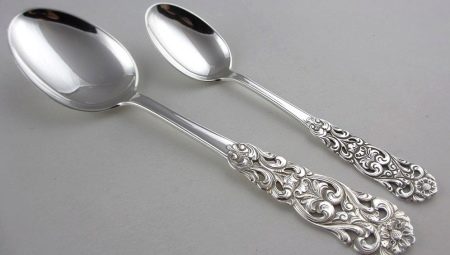Silver spoons are considered a must in every home where children live. In our article we will tell you how to choose and properly care for cutlery, as well as why there is a tradition to give them to babies, and what are the useful properties of silver spoons.
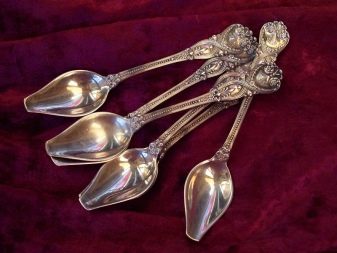
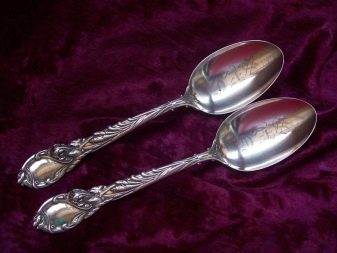
History
Spoons made of such metal as silver appeared in ancient Rome and Greece. In the Middle Ages, only noble citizens and the royal court used similar cutlery. They got a wider circulation a little later - in the Renaissance. Then the custom appeared to give “christian spoons” to the christening of the child, they were made of silver, and the cuttings were decorated with the image of the Virgin, Jesus Christ and angels.
Rich godparents gave their godchildren a pair of spoons, and children from the most eminent families received a full silver set of 12 items. Traditionally, the child was given a spoon with the image of the apostle, in whose honor he received his name. However, not everyone could afford such a gift, which is why the well-known phraseological unit appeared “Born with a silver spoon in his mouth”, which means that a person was born in a family with a very high material income.
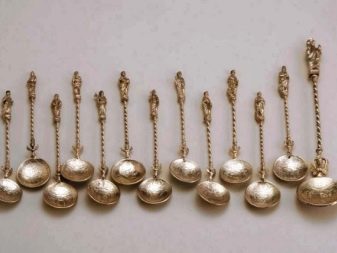
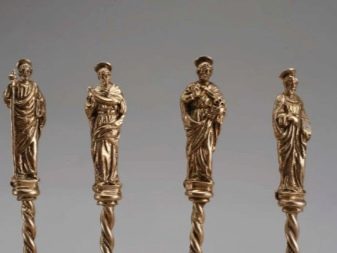
In baroque times, other options for decorating spoons first appeared - ornate patterns, landscapes, and other pictures began to be applied to them.
In Russia, such cutlery appeared at the end of the first millennium. So, in 998, the retinues of Prince Vladimir received these spoons as a gift for the adoption of the Christian faith and the complete rejection of paganism.
In our country, a spoon made of silver has always been considered a very good and expensive present - it was presented not only for the appearance of the first tooth, but also for the child’s admission to the gymnasium, and was also presented as a gift to the newlyweds. The wealthiest families collected silver cutlery as a dowry for their daughters - traditionally it was passed from mother to daughter from generation to generation.
Table sets have always been considered the most valuable - their cost is much higher than that of scattered devices, although a single spoon with a monogram of a famous master can have a pretty impressive cost.
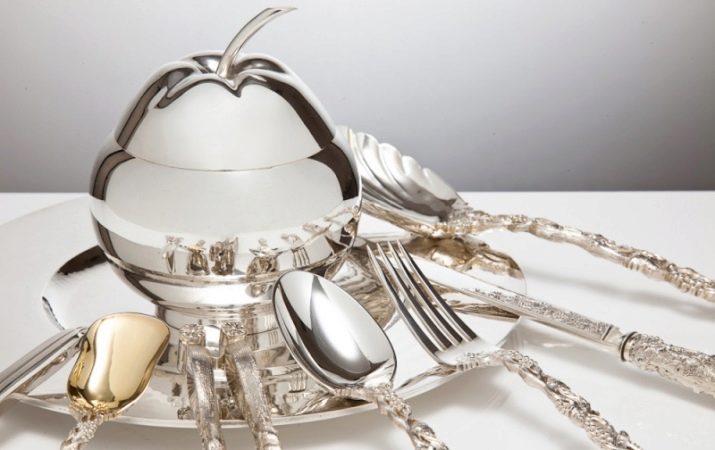
For example, at the beginning of the last century, a pair of Faberge spoons at Christie’s auction went for $ 8 thousand, and a spoon made by Fedor Ruckert was sold for $ 12.5 thousand.
All over the world, German silverware is highly regarded. Thus, Robbe & Berking has been supplying its products to the court of the Arab sheikhs and the Queen of England for a long time. No less popular products are brands Robert Freund, Franz Schnell Halle, as well as Herbert Zeitner.
Highly rated English brand silverware William Suckling, Ridley Hayesas well as products of some Danish enterprises. Among the Russian masters, the most famous were the brothers Grachev, Ovchinnikov, Sazikov and, of course, Faberge - many of them in the past were suppliers of dishes for the Russian imperial court, this role was honorable and prestigious, therefore the dishes of these brands were usually branded with a special distinguishing mark. Currently, the products of the Argentina factory are in demand.
Nowadays, the prices for the work of these masters can not be called sky-high, they can be allowed not only by millionaires. For example, a silver spoon with gilding, decorated with the image of the Virgin, the Danish craftsman A. Michelsen, made in 1916, was sold for $ 230, in general, the price of cutlery from this master varies from 50 to 600 dollars.
Antique silver spoons made in the 18th-19th centuries are slightly more expensive, and a set of silverware made of 6 spoons and forks, made in 1855 by the famous jeweler Hippolyte Thomas, is offered for one and a half thousand dollars - the weight of the set is just over a kilogram, all appliances decorated with the owner's monogram.


Samples and hallmarks
The presence of a sample on any silver product indicates its value and noble origin. If we turn to the numbers, the marking shows what percentage of silver is in the items. For example, Sample 925 means that the silver content is not less than 92.5%, and alloying elements account for no more than 7.5%, most often copper is used.
Respectively, the most expensive spoon is 999 samples: it contains almost no impurities; these products always have a bright silver tint and do not darken over time. At the same time, pure silver is a ductile metal. During use, these spoons easily bend, and after several years small scratches and nicks form on their surface, such a spoon is very easy to break.
Spoons made of test alloy 925 represent the optimal combination of mechanical strength and characteristic silver shine. Alloys of other samples retain strength, but become yellowish as they are used.
Typically, 925 test spoons are covered with gilding or enamel, so they retain an attractive appearance and a specific color.
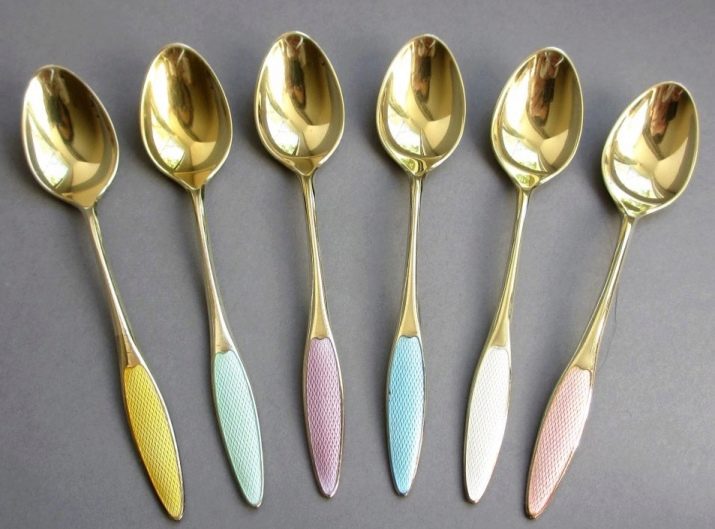
It is known that in France produce silver cutlery 950 and 900 samples.
Many silver spoons have hallmarks; a great many of them are known. The fact is that in each country in a given period there was a system for marking silver. For example, in Germany until 1988, the lot system of samples was in use, and in America to this day a karat is used. On older appliances, there are usually 3-4 or even more hallmarks. So, Russian spoons made in the second half of the last century have as many as 5 characters:
- a digital designation showing the proportion of silver in the spools (usually metals 84, 88, as well as 91 samples);
- year of testing (for example, 1854);
- the brand name of the master who branded the product (usually only his initials were put);
- the accepted designation of the assay chamber (for example, for Moscow it is George the Victorious);
- hallmarks of the master who made the device.
Antique European spoons had their own individual branding system. So, on the products of English masters you can find a lion with a raised paw - this is a sign that the spoon is made of sterling silver (925), and on products made from 1783 to 1890. inclusive, additionally put a stamp of duty, as well as an imprint of the image of the monarch ruling at that time.
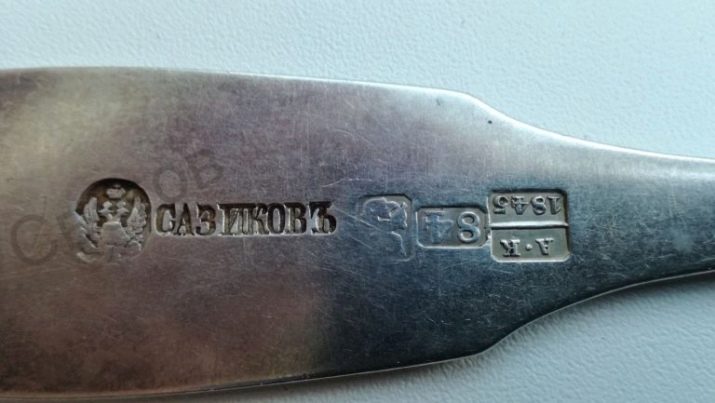
Advantages and disadvantages
The benefits of silver have been known since ancient times. It was believed that water in contact with this metal becomes healing, healing from many dangerous ailments. Crockery made of this metal was widely used in various cultures and religious rites, and the usefulness of silver was confirmed in scientific research.
It was found that metal has the ability to kill microbes, and it is silver that manifests its bactericidal features in a larger volume. Following him are copper and gold. If you have a silver spoon, then you can always make silver water. To do this, you just need to lower an ordinary spoon into it and maintain at room temperature for about a day.
Silver has the ability to destroy more than 700 types of bacteria, while it is 1750 times more effective than carbolic acid, 3.5 times more effective than potassium permanganate, chlorine and furatsilin, without touching beneficial microorganisms. It is noteworthy that bacteria do not develop resistance to silver, therefore, even with prolonged use, it remains effective in the fight against pathogenic microflora.
Another useful quality of silver is that its ions can distinguish healthy cells from patients by the heat of the emitted waves, thereby setting the affected areas to a healthy range.
These features made the tradition of donating a silver spoon “per tooth” relevant - the use of such devices for feeding babies causes painless teething, growth and a good appetite for the child, ionic particles of this noble metal inhibit the development of bacteria, viruses and other harmful microorganisms that live in food, the oral cavity and stomach of a person.
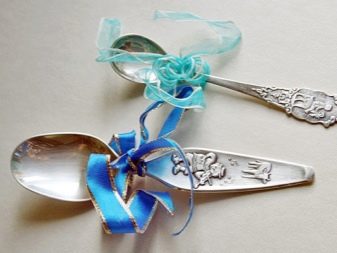

However, silver ware has its drawbacks:
- upon contact with meat products and legumes, spoons of silver begin to darken, therefore, require constant care;
- due to increased thermal conductivity, silver heats up pretty quickly, for example, a spoon left in a glass with boiling water in a matter of seconds becomes so hot that it can hardly be picked up;
- low-grade silver is rather brittle and, if handled carelessly, begins to break;
- Silver cutlery, when used frequently, becomes thinner and more susceptible to mechanical stress.
Analyzing the advantages and disadvantages of silver spoons, one can make an obvious conclusion - it is not worth buying silver products with the intention of frequent use. It is better to get silverware for special occasions and during large family gatherings.
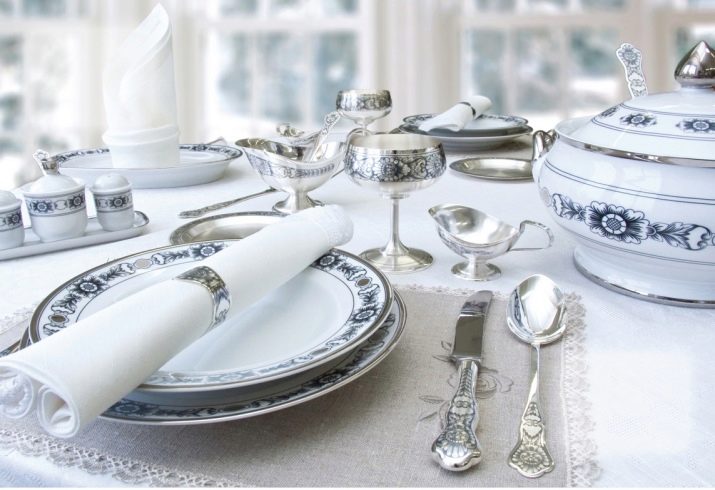
How to distinguish from cupronickel instruments?
Silver is often confused with cupronickel. Of course, if you buy a thing in a store, everything is clear, but if you, when analyzing things inherited from you, find a silver cutlery, it is very important to understand whether it is of any value. Visually cupronickel is very difficult to distinguish from silver at home, but if you adhere to some recommendations, then your task will be greatly simplified.
- Look carefully at the sample. If you have a spoon from cupronickel, then on it you will see the abbreviation ISC, it stands for copper, nickel and zinc - these metals are the main components of the alloy. On silver spoons will stand the most common test, consisting of several numbers.
- Hold a spoon in water for about a day. A silver product will not change its appearance, while cupronickel starts to oxidize and takes on a dirty green hue.
- If you have a pencil on hand, you can use it: just rub the surface - silver will remain unchanged, you will notice a dark spot on cupronickel surfaces.
- Try to estimate the mass of the spoon, put it on the scales - silver should be heavier than cupronickel.
- If you buy a product, then think about its price.. If you are offered silver at a low cost, this is a good reason to think - it is possible that they are trying to deceive you.
- Engage your own sense of smell; cupronickel can be identified by the smell of copper. In order to make the aroma more pronounced, it is better to rub the spoon a little.
- Use regular iodine: drip a little on a spoon and place in the bright sun - A dark stain should appear on the silver product. However, this method also has its drawback: you have to spend a lot of energy to clean your spoon.
- Chrompeak can be used instead of iodine. Silver should give a red reaction, and the higher the sample, the more saturated the shade.
Do not forget that in previous years cupronickel was very often used for the manufacture of cutlery, and if the product in front of you is not sampled, it is most likely made from the ISC and covered with a light silver coating.
Despite the fact that each of the above methods relates to workers, it is very difficult to distinguish silver from cupronickel in domestic conditions. If you need 100% confidence, it makes sense to turn to professional jewelers, restorers or antique dealers - they will give an accurate assessment not only about the composition of the metal device, but also help to find out its approximate manufacturing date and cost.
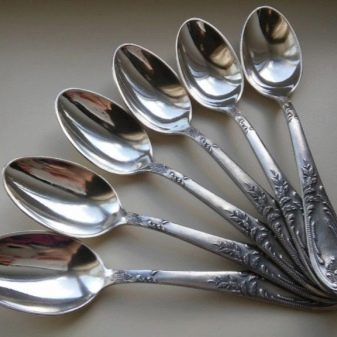

Varieties
Spoons today are issued in the widest assortment - they can have different shapes, shades, different sizes and purposes.
The main types of spoons include 4 options.
- Canteen. These devices are suitable for eating liquid cereals and first dishes from a high bowl, as well as for distributing salads and other snacks. In Russia, its volume is approximately 18 ml.
- Dessert. The device is used for sweet dishes and pastries served in small plates, as well as in deep cups for broths and soups. Its size is about 10 ml.
- Tea room. Its purpose is to mix sugar in a glass of tea, in addition, it is often used for desserts. The volume of such a spoon is 5 ml.
- Coffee Shop. This spoon is 2 times smaller than a teaspoon, its volume corresponds to 2.45 ml and it is used complete with small coffee cups.

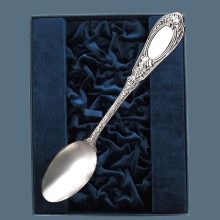

They also release auxiliary spoons.
- Bar. It is an object with an elongated spiral-shaped handle, at the end of which a small ball is placed. It is suitable for preparing various smoothies and cocktails consisting of several layers.
- Bouillon. It is elongated or round, but rather deep, it is used for liquid dishes.
- Bottling. It is used for pouring hot dishes and laying out main dishes on plates.
- Sauce. It differs in small size and pointed nose.
- Absinthe spoon. Its purpose is to add sugar to this strong alcoholic drink.
- Curly. It is used for spreading jam, jam and mousses from a common bowl or jar into small individual saucers.
- Spoon for potatoes. Visually, it is somewhat reminiscent of tubers.On both sides there are so-called "ears" - they prevent the fall of hot boiled or baked potatoes when applied to plates.
- Spoon for spices. Its purpose is clear from the name. Usually it has a compact size and always comes with seasonings on the stand.
In addition to all of the above varieties, on sale you can find spoons for oysters, sour cream, sweets, as well as caviar and many others.
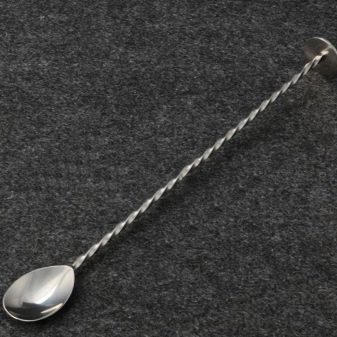
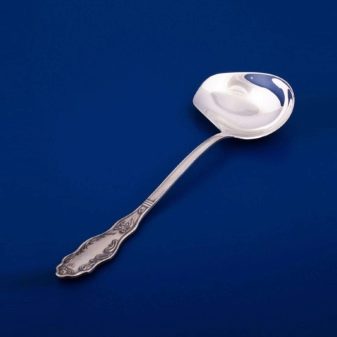
Selection recommendations
The health of a person, especially the smallest member of the family, is most important, therefore, when buying a spoon made of silver, you should be extremely careful. If you intend to present a spoon exclusively as a souvenir, then a beautiful decor will be quite enough, but if you decide to give a gift that will be used for subsequent feeding, then ask the seller for a sanitary certificate.
When using a spoon, you should not have the slightest doubt that the product is of the highest quality and functionality. The authenticity of the certificate is the main evidence that the use of cutlery does not pose a threat to the baby's life. This document also confirms that the product is made of an environmentally friendly alloy using a standardized process.
Any quality silver spoon should meet the following criteria:
- have a scoop of a rounded shape, without any chips and various kinds of notches, which often lead to injury to the mucous membrane of the mouth and tongue of the baby;
- the handle should be as comfortable as possible, it is desirable that there are some irregularities at the edges, they will allow the crumb to make a more stable grip;
- the size of the spoon should fully meet the characteristics of the age and height of the baby;
- metal must be of the highest quality.
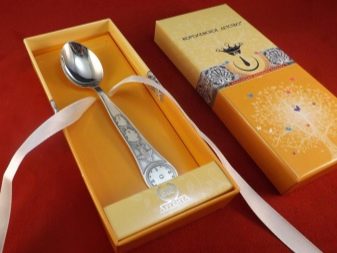
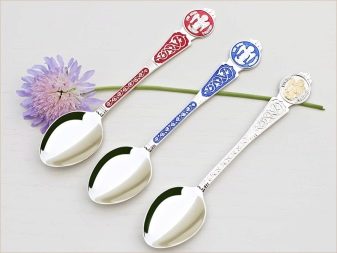
So that the spoons do not fade for as long as possible, they are usually covered with 999 pure silver. In this way, the effective appearance of the products is preserved without compromising the beneficial properties of the metal.
However, not all coatings are as useful as silver plated. For example, gilding on silver looks very expensive and spectacular, but because of it all the useful properties of silver itself are lost.
Sometimes, to give the metal a greater shine, it is coated with rhodium. This is a noble metal that is able to protect the cutlery from the effects of chemical solutions and mechanical damage. Silver with a similar coating looks very impressive, and also makes the metal especially resistant to corrosion. Rhodium silver retains the decorative properties of the metal for a long time, however, the death of viruses with bacteria in contact with such spoons does not occur.
Some silver spoons are varnished. - such cutlery for its intended purpose do not use, they perform exclusively decorative and souvenir functions. Varnish is applied to silver only in order to ensure its long-term storage, the coating preserves the silver, prevents its oxidation and patina, but, when interacting with food, releases toxic substances into it.
Souvenir products also include silver spoons coated with silver mobile. This type of coating looks luxurious, but it does not allow silver to fully show its healing properties.
All types of coatings, with the exception of silver 999, largely reduce the healing properties of the metal, prevent the penetration of ions into food, and all this makes the cutlery completely useless from a medical point of view.
As for the design, in recent years, they often give nominal engraved spoons, devices with the image of a guardian angel or the zodiac sign.
In their appearance, spoons for a child, for men and women differ.
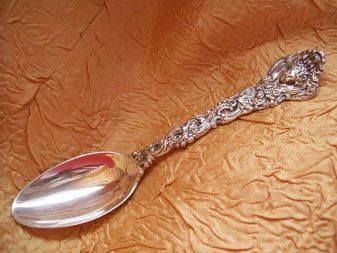
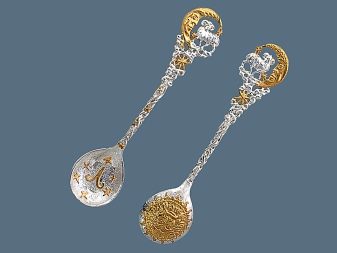
Storage and care
Nowadays, the choice of silver care products is great - you can always find the right product in any hardware or jewelry store, but traditionally popular means used by our grandmothers and great-grandmothers are also very popular.
- Very well cleans silver alloys ammonia. To do this, just dip the spoons for an hour in a solution of alcohol mixed with water in a proportion of 1 to 10. If you do not have time to wait, soak a rag in a solution of ammonia and begin to wipe the product as intensely as possible, until the spots disappear completely. Keep in mind that table silver with blackening is therefore not recommended.
- To return the silver shine, a potato broth has proven itself well. In order to get rid of darkening, you need to place a silver spoon in it for a quarter of an hour, and after this short time the device will look like brand new.
- Silver citric acid cleans well. Put a spoon in its concentrated solution for several minutes, and very soon it will shine again with a cold shine.
- Silver spoons can be cleaned with tobacco ash. To do this, mix it with water, boil in the resulting composition of the spoon, after which the cutlery must be thoroughly wiped. Alternatively, you can mix the ashes with lemon, and treat the product with this composition.
- A good effect is given by baking soda, especially if a lot of stains appeared on a spoon. The sequence of actions here is simple - you just need to take a damp cloth, scoop up a little soda and wipe the places of pollution until they disappear completely.
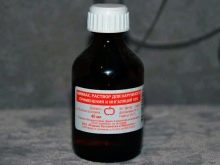
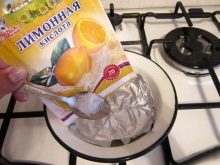
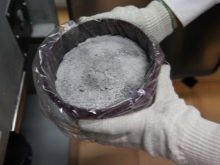
If you don’t have any of the above at hand, you can use regular toothpaste. You just need to put it on a soft rag, and thoroughly wipe the spoon.
For how to clean cutlery (cupronickel, silver, stainless steel) and other utensils, see the video below.
